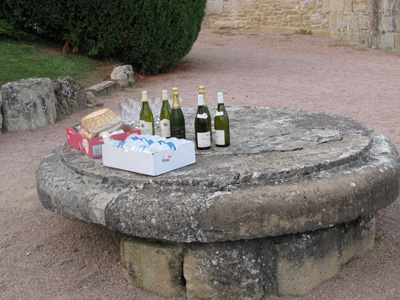tundra plant adaptationshouses for rent wilmington, nc under $1000
tundra plant adaptations
- フレンチスタイル 女性のフランス旅行をサポート
- 未分類
- tundra plant adaptations
Tundra Animals List, Facts, Adaptations, Pictures it is a shrub that can reach 15 to 20cm in height. "Climate Sensitivity of Shrub Growth Across the Tundra Biome." Like the Arctic tundra, plants in the taiga biome have adapted to difficult winters and few days without killing frost. From their humble beginnings as single-celled algae, plants have evolved clever adaptations to survive and reproduce even in the harshest environments. In tundra you will find the landscape full of bogs and wetlands. These flowers absorb energy and warmth from the sun and transmit it to the rest of the plant. Cacti have prickly spines instead of leaves to keep animals from eating the plant to obtain the water that is stored in parts of the cactus. This evergreen plant, named for the bears that feast on its bright-red berries, has a stem covered in thick bark with fine hairs. Whether you need help solving quadratic equations, inspiration for the upcoming science fair or the latest update on a major storm, Sciencing is here to help. The transition from mountain forest to the shrub- and herb-dominated alpine tundra at higher elevations is very similar to the transition from the coniferous forest belt to the Arctic tundra at higher latitudes. Instead, the tundra has patchy, low-to-ground vegetation consisting of small shrubs, grasses, mosses, sedges, and lichens, all of which are better adapted to withstand tundra conditions. The tundra shrubs show off their vibrant fall colors with misty mountains rising in the background. Our goal is to make science relevant and fun for everyone. "Potential Contribution of Native Herbs and Biological Soil Crusts to Restoration of the Biogeochemical Nitrogen Cycle in Mining Impacted Sites in Northern Canada." Water lilies can thrive in muddy water because of this adaptation. So how do tundra plants survive? But compared to other biomes, thats actually not a lot, making this a low-diversity biome. By clicking Accept All Cookies, you agree to the storing of cookies on your device to enhance site navigation, analyze site usage, and assist in our marketing efforts. Therefore deep roots of tall trees can not penetrate it. Some plants grow with very little or no soil. This biome has a short growing season, followed by harsh conditions that the plants and animals in the region need special adaptations to survive. Tundra Plants Are Dark in Color . To view the purposes they believe they have legitimate interest for, or to object to this data processing use the vendor list link below. If no button appears, you cannot download or save the media. 4.9 (18) $3.00. What are 3 plant adaptations in the tundra? 55, no. PDF Tundra Plant Animal Adaptations - Wilson Central School Seeds may be dormant for years before there is enough moisture to sprout. Another factor that makes the life of tundra plants hard, is the strong cold winds. while there are more than 17000 plant species living in the tundra. Since mosses do not have roots and stems. Melissa Childs. Since much of the soil is permanently frozen, plants only have a thin soil layer termed the active layer that thaws every summer, making shallow roots a necessary adaptation. bladderworts trap flies and other insects that are nearby. The bearberry has leather like leaves and silky hairs that keep the plant warm, it also grows low to the ground, helping to avoid the wind. Adaptations can include such traits as narrow leaves, waxy surfaces, sharp spines and specialized root systems. Our goal is to make science relevant and fun for everyone. . Its hardiness and low maintenance help it survive the worst of the tundra environment while keeping its colors vivid and bright to attract pollinators. The soil in the Arctic is largely permafrost or soil that remains frozen year-round, leaving only a thin surface layer of thawed soil in summer for plant roots to grow in. This is a perennial plant that adapts to the tundra hard conditions through going dormant in the winter season. Plant adaptations in the desert, rainforest and tundra allow plants and trees to sustain life. Bearberry is an evergreen plant that belongs to the heather family. Plant life proliferated after plants developed the ability to produce seeds that traveled long distances in the wind. This because the tundra soil is poor and has little nutrients. Luckily there are lots of habitats within the rainforest, from the cooler, Biology, Ecology, Geography, Physical Geography. "Labrador Tea (Rhododendron Groenlandicum) Attenuates Insulin Resistance in a Diet-Induced Obesity Mouse Model." If you have questions about licensing content on this page, please contact ngimagecollection@natgeo.com for more information and to obtain a license. Like some cacti, the primrose plant becomes active at night, and flowers bloom when temperatures are cooler. narrow leaves helping to reduce transpiration. Photosynthesis also produces energy-rich carbohydrates like starch. Without the need to penetrate the permafrost ( the tundras year around frozen soil layer). Plants growing in the tundra tend to have short roots that usually spread horizontally, as they cannot penetrate the permafrost below. The Rights Holder for media is the person or group credited. Its leaves are used by human residents of the Arctic tundra to create both beverages and medicine. Taller willows, grasses, and plants in the sunflower and legume families (Asteraceae and Leguminosae, respectively) are common on the sands and gravels of riverbanks, but vegetation is quite sparse on higher lands, foothills, and Arctic mountains. it can be submerged in water or floating. While there are about 17000 plant species in the tundra. This happens because the tundra rainfalls can not drain through the tundras lower soil layer. Their leaves can photosynthesize at low temperatures. The tundra is characterized by permafrost, a layer of soil and partially decomposed organic matter that is frozen year-round. Most tundra flowering plants evolved to adapt to the severe cold in the region by growing hair in their leaves and stems. if(typeof ez_ad_units!='undefined'){ez_ad_units.push([[300,250],'cityandgarden_com-leader-3','ezslot_5',195,'0','0'])};__ez_fad_position('div-gpt-ad-cityandgarden_com-leader-3-0'); That layer is permanently frozen (permafrost). If you have questions about how to cite anything on our website in your project or classroom presentation, please contact your teacher. The tundra, Earths coldest biome, is home to some impressively resourceful plants. 1, 2015, pp. As a result, plants that require deep root systems cannot survive - vegetation is low and fast growing. While a lighter green on the top. There are also a few fish species. In Arctic and alpine tundras, the number of species of plants and animals is usually small when compared with other regions, yet the number of individuals per species is often high. Perhaps the greatest danger, however, comes from climate change. Trees in the rainforest dont need insulating thick bark like deciduous trees to stay warm and hold on to water. Its called permafrost, like permanent frost. It also has a shallow growing root system, and the leaves grow long fuzzy hairs to help combat the weather. 887-891., doi:10.1038/nclimate2697. Tundra plants have developed many clever adaptations to survive arctic temperatures, snow, ice, and long stretches without water. It also limits foliage damage from the impact of tiny particles of ice and snow that sweep through the tundra, driven by the harsh winds. (1) Some of the radiation is absorbed in the epidermis by flavonoids, particularly UV radiation. TUNDRA BIOME | What Is A Tundra Biome? | Tundra Region - YouTube bladderwort is a kind of plant that consumes insects and little animals as nutrients. Shrews, the smallest of all mammals, thrive in the tundra. The average winter temperature is -34 C, with an average summer temperature of 3-12 C. It also developed silky long hair in its leaves to keep itself warm. Tundra insects have also developed adaptations for the cold; mosquitoes (Aedes nigripes), for example, have a chemical compound that acts as antifreeze, lowering the freezing temperature in their bodily fluids. This growth pattern is an adaptation that allows plants to resist the effects of cold temperatures. It also limits foliage damage from the impact of tiny particles of ice and snow that sweep through the tundra, driven by the harsh winds. Smaller plants are more protected from cold and winds. Evening Primrose has a long, thick taproot that helps this plant reach and store water and nutrients. Colorful vegetation, like this Parry's primrose, blooms in summer on high elevation slopes. Some aquatic plants, such as water lilies, float on the surface of the water. Pinyon pines have vertical and horizontal root systems that reach out 40 feet in both directions to provide water. And what makes things worse is that the very cold tundra weather turns rainfalls to snowfalls. With little sun, water evaporates slowly, making more available for plants or animals to use. Animals who live in the tundra have special adaptations to survive. It's also estimated that the amount of carbon in permafrost is twice as much as the amount in our atmosphere. The taiga, also called the boreal forest, is a once glaciated area within Eurasia and North America that has retained patches of permafrost. Learn About Remarkable Plant Adaptations: Ideas for Better Teaching! Why Is Biodiversity Critical To Life On Earth? This adaptation helps plants conserve heat by reducing the surface area exposed to the cold, as well as protecting the plants from winds. Yucca provide food for caterpillars that hatch into moths. National Geographic Society is a 501 (c)(3) organization. Copy. the word tundra derived from a Finnish word which means treeless land. Arctic Tundra Plants - Gardenerdy Dark colors absorb and retain heat better than light colors. Science for Kids: Tundra Biome - Ducksters Each type of tundra has its own number of challenges for the animals that choosing it as their home. Some alpine plants have fine hairs or "fuzz" on their leaves and stems. Tundra form in two distinct cold and dry regions. It produces flowers that range from red and pink to yellow and brown. Plant adaptations in the tundra. You can find 1,700 kinds of plants, like low shrubs, sedges, reindeer mosses, liverworts, and grasses. It is this peat that makes the tundra an important, natural carbon sinkamongst the . There are no trees in the tundra. Its leaves are oval-shaped and have a pointed tip, while its flowers are spiky with no pedals. It's cold - The tundra is the coldest of the biomes. the hair helps it to stay warm during the severe cold period in the tundra. What Are Some of the Adaptations of a Labrador Tea Plant? - Reference Dark colors absorb and retain heat better than light . These plants also make food through photosynthesis but do not depend on soil for nutrients, relying instead on consumed animal proteins. It grows as an intense mat. The Tundra Biome is a learning set containing 3-part cards, description cards, information posters, student booklets for coloring and practicing handwriting and research worksheets for students to learn about the tundra biome. besides that, the surface soil will be frozen during the winter season. There are three tundras in the world, the arctic tundra, Antarctic, and Alpine tundra. Plants of the same species often grow near each other in clusters in the tundra. Plants in the tundra: 9 Arctic plants and how they adapt
Old Abandoned Mansions In Florida,
Washington State Exempt Salary Threshold 2023,
Abdominal Aortic Atherosclerosis Calcifications,
Lawson Employee Self Service Prime Healthcare,
Victoria 2 Formable Nations Hpm,
Articles T
tundra plant adaptations










